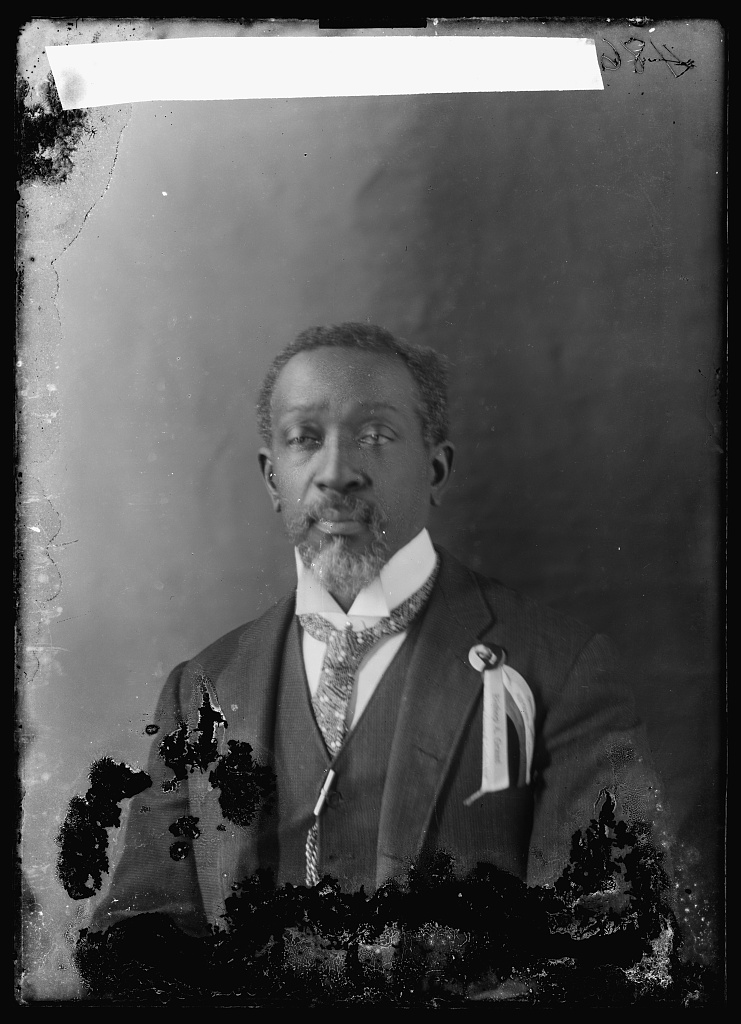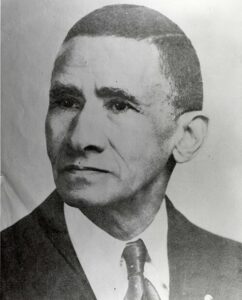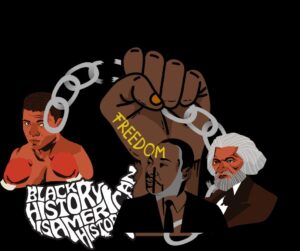Once upon a time in Black Entrepreneur History lived an African American man named Isaiah Thornton Montgomery who became the founder of an African American town he named Mound Bayou, Mississippi.
Isaiah Thronton Montgomery was born on May 21, 1847 on the Davis Plantation in Mississippi. He was born of parents who were enslaved which means he was automatically enslaved at birth, however, due to the plantation/estate of his birth, he was able to learn more than many enslaved in his position of servitude. Where he was born, the Davis Estate/ Plantation, he and other enslaved were allowed to teach, read, and write as well as manage and run businesses.
Isaiah Thornton Montgomery’s Parents
Isaiah Thronton Montgomery’s father was an African American man named Benjamin Thornton Montgomery who was enslaved and sold without warning to a slaver, relocating him south of a city called Natchez, Mississippi. His father was then sold again to a slaver named Joseph E Davis, Esq on a large plantation in Warren County, Mississippi. The plantation was known as Hurricane. After that his father was then connected to the plantation of the Honorable Jefferson Davis – president of the United States Confederacy – on the Davis Estate in Davis Bend[1].
His father soon ran away, not liking his relocation to the plantation from Virginia, but was recaptured and taken back to the Davis Estate. While on the Davis estate, his father learned to be a “proficient mechanic, machinist and civil engineer” while also being encouraged to read and write by Davis, after they had come to a “mutual understanding” [there are no details of how and what type of understanding this was This quote is in the words of Isaiah Thornton Montgomery himself][1]. This led his father to managing a small mercantile business, including the Davis family’s accounts.
His mother was Mary Montgomery who was also a Virginian taken to the Davis plantation. Together with Isaiah’s father, they had four children – William, Isaiah, Mary Virginia, and Rebecca C.
Isaiah Thornton Montgomery’s Youth & Education
Isaiah was taught under the instruction of another enslaved man on the Davis Plantation named George Stewart, and he used the Webster Blue Back Speller. It was Isaiah’s father who also taught him writing in the day and recitation at night. It was later that Davis’ wife wanted Isaiah to learn domestic work in the home under the instruction of the Honorable Jefferson Davis’s brother, Joseph Emory Davis – a lawyer and one of the wealthiest planters in Mississippi at the time of the Civil War – while Jefferson Davis spent much of his time in Washington. It was soon after that when Isaiah was “free from responsibility to anyone else.[1]“
A Webster Blue Back Speller is a book that has been utilized for over 100 years to teach spelling, reading, pronunciation and writing, and it was originally published in the 1780s. It is one of the best selling books of all time in America.
Isaiah was placed as a young secretary and office attendant in what he described himself as “one of the finest libraries to which this section was proverbial, and having free access to all the reading matter, which came daily, weekly and monthly, to the parlor and library of the Davis family“, despite the fact that his Webster Blue Back Speller education ceased due to this new domestic work. He continued to read and learn history, current events, language and composition all on his own which benefited him later in life. It was whenever the Honorable Jefferson Davis returned home to visit, he would have to wait on him hand and foot.
Isaiah Thornton Montgomery’s Civil War Duties
Both Isaiah and his father had special duties during the Civil War. Isaiah’s duty was to transport the mail from city to city. He also was required to read the dispatched news as he took it back to the Davis Estate because they wanted to hear it before opening their own mail.
Post Civil War & Isaiah’s Founding of Mound Bayou
After the Civil War was won by the Union, the Emancipation Proclamation was signed, and enslaved African American people were being set free. This process took years, however, Isaiah and his family were able to move up North. He worked in carpentry and on a dock yard with is father, and they decided, along with his older brother, to start a business in the South. Therefore they all moved back down south to the same area they left.
By the time they had all moved back, the area Davis Bend was in shambles, Jefferson Davis had sold his property to Benjamin Green, a formerly enslaved cousin to Isaiah and Black leader in the community, and there was much hostility toward African Americans.
Despite all that was going on, Isaiah Thornton Montgomery founded Mound Bayou in 1887 in the Mississippi Delta, purchasing over 800 acres of land – swamp and forest.
It was then that Isaiah himself sold the idea of the all Black community and town to African Americans ready to move in and get to work on building up the newly purchased area. And got to work they did, using all their muscle to cut down trees, clear land and build. Some of the most educated men came to establish the community because that’s who was needed[2]. According to his own autobiographical writing:
“In 1872, I married Miss Martha Robb who was born of a slave mother near McNutt, Miss, in May, 1822. After the final close of our cotton business in 1885, I removed to Vicksburg, and being in bad health, did very little for two years. In the Fall of 1880, my attention was attracted to the Great Yazoo (Miss.) Delta. After investigating that section closely, I opened a colony, which now numbers about six hundred persons, and laid out the growing little town of Mound Bayou, on the I. N. O. and T. RR.. in Bolivar County, where I now conduct a business of $20,000 per annum, exclusive of cotton shipments, which will amount to 250 bales, crop 1800. My real estate interests are worth about $20,000. The colored people in that vicinity own 5,000 acres and are increasing their holding rapidly.[1]“
The area was African American lived, managed and owned, and after a downturn, the area revived with Mound Bayou getting its own hospital in 1942 called the Taborian Hospital. All the staff were African American, and they provided top notch care for low prices to the African American community, even with the wealthiest and most skilled African American chief surgeon on the staff – Dr. Theodore Roosevelt Mason Howard. The hospital was sponsored by the International Order of Twelve Knights and Daughters of Tabor which was an African American fraternal organization founded by Moses Dixon, a formally enslaved African American man in 1872.
Mound Bayou grew into a safe haven for Black people though inside one of the most racist states in the USA. Even the civil rights leader Medgar Evars lived in Mound Bayou. The small city even had several other Black owned businesses such as:
- Carnegie Library
- Several schools
- Train station
- Bank
- Sawmills
- Cotton Gins
- Cemetery
- Mound Bayou Oil Mill and Manufacturing Company
Isaiah was elected mayor of the town in 1888, and he was the Mississippi Constitutional Convention’s only African American delegate. As far as other businesses, he founded the Farmer’s Cooperative Mercantile Company, and he was even the cofounder of the National Negro Business League in the early 1900s. He also played a major development role in the Mound Bayou Oil Mill and Manufacturing Company.
Today, Mound Bayou is still around, with a population of about 1800 people, mostly African American, however, with the end of segregation, Mound Bayou began to suffer hardships[2]. People began to move out for a different way of life, and not enough people are remaining and moving in to revitalize the area.
Death of Isaiah Thornton Montgomery
Isaiah Thronton Montgomery passed away on March 6, 1924. His tombstone reads his name, birth and death date along with the birth and death date of his wife – Marth Robb Montgomery – whom is buried along side him in Mound Bayou Cemetery.
Sources:
- The World (New York, New York)27 Sep 1890, Sat Page 2
- https://www.npr.org/2017/03/08/515814287/heres-whats-become-of-a-historic-all-black-town-in-the-mississippi-delta
- Photo of Isaiah Thornton Montgomery is public domain from 1873 to 1890 (wikipedia)





More Related Stories
Isaac Scott Hathaway – Founder of Isaac Hathaway Art Company & Designer of First African American Coin
James Wormley – Founder of the Most Expensive Hotel in Washington D.C. in 1800s – the Wormley Hotel
William E. Matthews – Wealthy Financial Broker & Civil Rights Leader of 1800s